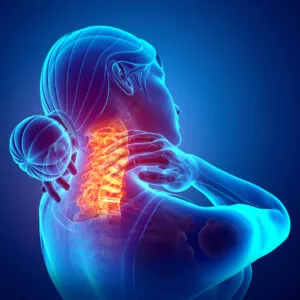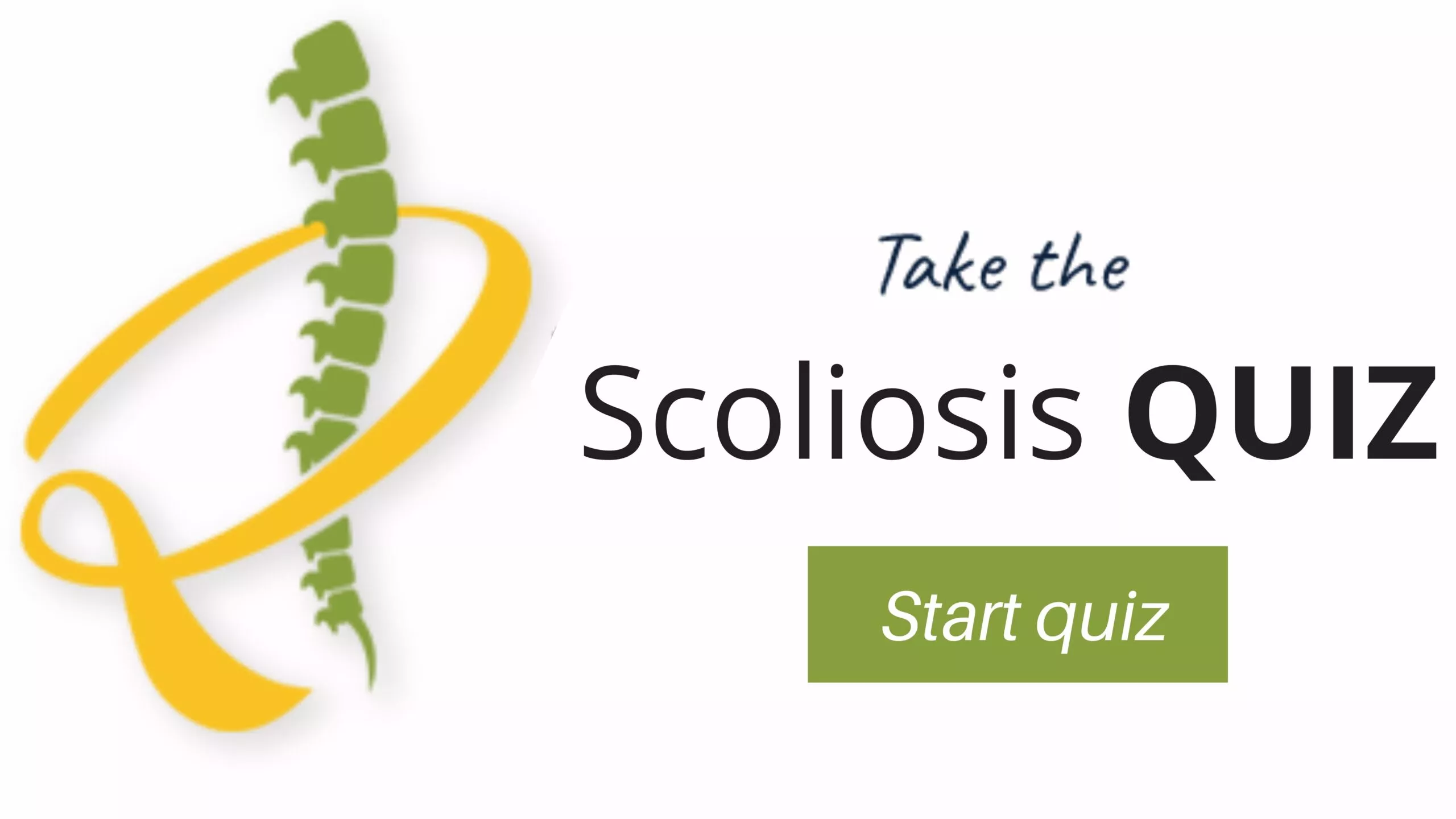The Spine Surgeons at the Southwest Scoliosis and Spine Institute are among the world’s finest.
Posterior Cervical Fusion
The posterior cervical fusion, performed through an incision in the back of the neck, permits a doctor to fuse two or more neck vertebrae. A doctor uses this procedure to:
- Stop the motion between two or more vertebrae
- Recreate the normal curve of the cervical spine and keep a spinal deformity from getting worse
- Stabilize the spine after a fracture or dislocation of the cervical spine
This surgery requires an incision through the back of the neck. Then a bone graft gets placed on the back surface of the problem vertebrae. During the healing process, the vertebrae grow together, creating a solid piece of bone. Likewise, doctors use this type of fusion in the cervical spine for fractures and dislocations. Also, doctors use it to correct deformities in the neck.
Posterior cervical fusion is used to treat a variety of conditions, including:
- Cervical spondylosis: This is a condition that causes the discs in the neck to degenerate and bulge. This can put pressure on the nerves in the neck. When this occurs, it can cause pain, numbness, and weakness in the arms and hands.
- Cervical instability: This is a condition that occurs when the vertebrae in the neck are not properly aligned. Doctors point to a number of causeative factors, including trauma, arthritis, and tumors. Cervical instability can lead to pain, numbness, and weakness in the arms and hands, as well as difficulty walking and balance problems.
- Cervical stenosis: This is a narrowing of the spinal canal in the neck. This can put pressure on the spinal cord and nerves, which can cause pain, numbness, and weakness in the arms and hands.
- Cervical tumors: These are rare tumors that can grow in the neck. If a cervical tumor is large enough, it can put pressure on the nerves in the neck, which can cause pain, numbness, and weakness in the arms and hands.
Posterior cervical fusion can also be used to correct deformities in the neck, such as scoliosis and kyphosis.
Questions and Answers
Whart is Posterior Cervical Fusion?
Posterior cervical fusion refers to a surgical procedure used to treat certain conditions of the cervical (neck region) spine. It involves the fusion of two or more vertebrae in the posterior (back) portion of the neck. Surgeons will use bone grafts, screws, plates, or rods in this procedure. The fusion restricts movement between the fused vertebrae, providing stability and alleviating symptoms caused by spinal instability or compression.
What conditions may require Posterior Cervical Fusion?
Surgeons recommend Posterior cervical fusion for various conditions, including cervical disc herniation, degenerative disc disease, spinal stenosis, cervical spondylolisthesis, spinal instability, or fractures of the cervical spine. The procedure aims to relieve symptoms such as neck pain, arm pain, numbness, or weakness in the upper extremities, and to stabilize the affected area of the spine.
What is the recovery process after Posterior Cervical Fusion?
The recovery process after posterior cervical fusion can vary depending on several factors, including the extent of the surgery and individual healing capabilities. Generally, patients can expect to spend a few days in the hospital for monitoring and pain management. After discharge, they may require a period of rest and limited physical activity to allow the fusion to heal. Physical therapy and rehabilitation play a crucial role in the recovery process, helping patients regain strength, range of motion, and functionality. The duration of recovery can range from several weeks to months, and regular follow-up visits with the surgeon are essential to monitor progress and address any concerns or complications that may arise.
The Benefits of Posterior Cervical Fusion
- Pain relief: Posterior cervical fusion can help to relieve pain caused by conditions such as cervical spondylosis, cervical instability, and cervical stenosis.
- Improved range of motion: Posterior cervical fusion can help to improve the range of motion in the neck.
- Increased stability: Posterior cervical fusion can help to increase the stability of the neck. This can help to prevent further injury to the neck and reduce the risk of pain and other symptoms.
Goals of Spinal Fusion
The goal of spinal fusion is to stop the motion caused by segmental instability. Consequently, this reduces the mechanical neck pain caused by too much motion in the spinal segment.
You may also hear the term anterior cervical fusion. Surgeons use this procedure to commonly treat neck problems. The surgeon works from the front (anterior) of the neck. Doctors place a bone graft between two vertebral bodies (interbody area) to replace the disc that normally sits between them. During the healing process, the vertebrae grow together, creating a solid piece of bone.
- Related Document: Anterior Cervical Fusion
- Related Document: Bone Grafts
Instrumented Posterior Cervical Fusion
 When a bone graft becomes held tightly in place, it will fuse the vertebrae together. To improve fusion, doctors commonly use metal plates, screws, and rods. Also, surgeons use many different types of metal implants to maximize the healing of the fusion. Bone heals best when held still-without motion between the pieces trying to heal. Similarly, the healing of a fusion appears the same as the healing of a fractured bone, such as a broken arm. However, the neck does not hold still very well, even with a brace worn around the outside of the neck. Wearing a brace for several months after the surgery can become uncomfortable.
When a bone graft becomes held tightly in place, it will fuse the vertebrae together. To improve fusion, doctors commonly use metal plates, screws, and rods. Also, surgeons use many different types of metal implants to maximize the healing of the fusion. Bone heals best when held still-without motion between the pieces trying to heal. Similarly, the healing of a fusion appears the same as the healing of a fractured bone, such as a broken arm. However, the neck does not hold still very well, even with a brace worn around the outside of the neck. Wearing a brace for several months after the surgery can become uncomfortable.
To improve the success of a posterior fusion, metal rods or plates are attached to the bone structures in the back of the spine. Additionally, surgeons may also use stainless steel or titanium cables. When surgeons use screws and cables, a brace may only be needed for a short period of time, or not at all.
The Surgeons at the Southwest Scoliosis and Spine Institute
We invite you to make an appointment to speak with us about your neck and the pain you are having. To date, we have seen more than 100,000 patients and performed over 16,000 surgeries. At Southwest Scoliosis and Spine Institute, we are committed to providing the highest quality care in the diagnosis and treatment of complex spine, scoliosis, and revision surgery—including pediatric and adult scoliosis, spinal deformity, spinal tumors, and degenerative conditions of the spine. Our practice and exam rooms offer a private, comfortable setting where our physicians can spend as much time as necessary to find the right treatment plan customized for you to eliminate the pain and embarrassment of your neck condition.
If you have questions or would like to contact us through email, please fill out the form and we will get back to you shortly.
____________________
National Library of Medicine: Posterior Cervical Fusion
If you or a loved one suffers from spinal pain, you owe it to yourself to call Southwest Scoliosis and Spine Institute at 214-556-0555 to make an appointment.



